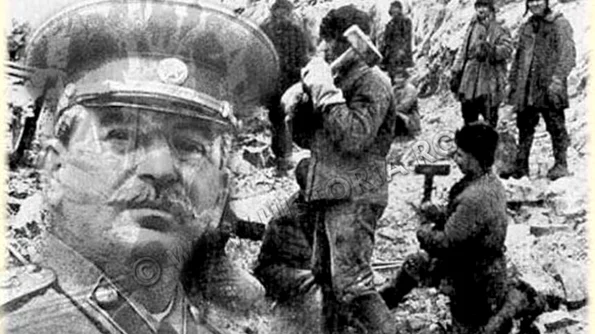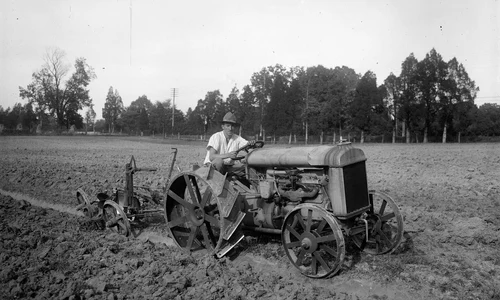
The Soviet Occupation of Bessarabia and Northern Bukovina
The annexation of Bessarabia and of Northern Bukovina is the direct result of the agreement between Nazi Germany and the USSR encapsulated in the Ribbentrop – Molotov Pact of August 23rd, 1939. The Ribbentrop – Molotov Agreement worsened Romania’s geopolitical standing. There are certain documents which reveal that the USSR planned to impose a mutual assistance treaty on Romania as in the case of the Baltic States. Thus, the USSR would have immediately conquered Romania, however, the Finnish – Soviet war delayed it[1].
After the war, the Soviets focused their attention on Romania, in general and on Bessarabia and Northern Bukovina, in particular. On March 29th, 1940, Molotov acknowledged the fact that Romania and the USSR had no treaty of mutual non-aggression, therefore the problem of Bessarabia had not been solved. Molotov explained that between the USSR and Romania, there is the unsolved issue of Bessarabia:the USSR had never sanctioned its annexation to Romania, although Moscow had never taken into consideration re-taking Bessarabia by the use of military force[2]. On June 23rd, 1940, the second day after the Franco – German Armistice was signed, the Soviet Foreign Minister conferred with the German ambassador von Schulenburg on the subject matter of Bessarabia and Bukovina. The Germans were irritated by the Soviet interest in Bukovina and thus, they opposed Molotov’s requests. In the end, the USSR gave way and claimed only Northern Bukovina, however, it seemed to have clearly strained the German – Soviet relations[3].
The evacuation of Romanian troops from Bessarabia was carried out in a chaotic and hurried fashion. The Joint Staff had more plans for the evacuation of Bessarabia:for instance, the Tudor Plan was based on the peace time train timetable and thus, the troops would have to be evacuated on foot. The Mircea Plan was, however, based on the war time train movement and therefore, the troops would have to be evacuated only at night. Yet, these plans bore no connection to the international situation at the time, thus, they would be implemented only when a special order was forthcoming[4].
Those in charge of the evacuation operations were the prefects, recruiting units, gendarmes and the police. Moreover, the order was that administrative institutions and military units should not leave the premises until the operative troops launched the complete evacuation procedure[5].
According to the documents, the Jewish minority of Bessarabia and Bukovina did attempt certain anti-Romanian and pro-Soviet actions at the time. Their actions were not very serious, yet they were enough to add to the anti-Semitic feeling of those years.
The majority of the documents refer to actions such as:hoisting red flags, friendly behaviour towards the Red Army, offences to the Romanian national symbols, the requisition of goods pertaining to the Romanian Army or to the territorial administrative units, taking part in the Soviet disarming of the Romanian units and sub-units as wells as maltreatments and assassinations of the Romanian troops. Thus, some historians argue that, because of such a high number of incriminating documents, there’s the possibility of a historical proof that the Jews who lived at the time in Bessarabia and Bukovina were anti-Romanian[6].
According to a report which refers to the Holocaust in Romania, the “critical examination of the documents and testimonies lead to more conclusions that the catastrophic image of the cession of Bessarabia and Northern Bukovina which was presented to the public opinion at the time[7].” In the report these events were presented as though they were intended to hide the lack of organization of the Romanian Army. It is quite obvious to what would lead the lack of organization and anarchy of the retreating Romanian Army.
Certain attacks or alleged attacks of the Jewish people on the Romanian Armies will be presented according to the documents of the time. In Soroca, the Jews attacked the trucks of the Recruiting Center, thus obstructing the evacuation of the Romanian troops. However, there are certain problems with the document as well as with the Romanian and Jewish accounts of what happened. Moreover, it seems that in Chișinău, some Jewish lawyers from the local bar had hoisted the red flags even before the arrival of the Soviet troops on Romanian soil and they perpetrated acts of violence against the Romanian civil servants. The lawyers – the majority of them being Jewish-in Reni, Ismail and Cahul would do the exact same. In Chernivtsi/ Cernăuți, Jewish people spitted on and tore the Romanian flag to pieces as well as hoisting the red flag on the union monument once they heard of the evacuation order[8]. In the region of Bălți, the Jews asked for Soviet help in disarming the Romanian troops.
However, it is certain that Romanians were also to blame for what happened. It is very possible that some Romanian soldiers applied certain measures which disturbed the Jews and thus, they were forced to choose the Soviet side. Yet, should the documents be true to the facts, the attitude of the minority would be considered reprehensible.
The Romanian retreat from Bessarabia and Northern Bukovina was accompanied by violence against the Jews not only in the evacuated territories, but also in the Old Kingdom as well, in Moldova. Yet, the physical aggression or assassination of the Jews was not ordered by the Joint Staff or other important military units, but it was the result of certain initiatives from Romanian units, sub-units and isolated military groups.
[1]Vitalie Vãratec, Six Days in the History of Bukovina (June 28th. July 3rd1940). The Invasion and Annexation of Northern Bukovina by the USSR.URSS, Editura Institutului Bucovina-Basarabia, Rãdãuți-Bucovina, 2001, pp. 12-26.
[2]Idem, Preliminaries to the Annexation of Bessarabia and Northern Bukovina. 1938 – 1940, Editura Libra, București, 2000, pp. 229-230
[3]Florin Constantiniu, Between Hitler and Stalin. Romania and the Ribbentrop Molotov Pact, Editura Danubius, București, 1999, pp. 104-105
[4]Apud, Tuvia, Friling, Radu, Ioaning, Mihail E., Ionescu, The Final Report, Editura Polirom, Iași, 2004, p. 75
[5]Apud, ibidem, p. 79
[6]Alexandru Șafran, A coal from the flames. The Jewish Community in Romania, 1939 – 1947, Hasefer, Bucharest, 1996, p. 18
[7]Tuvia, Friling, Radu, Ioanind, Mihail E., Ionescu, The Final Report, Editura Polirom, Iași, 2004, p. 80
[8]Lya, Benjamin (editor), Documents, Polirom, 2005, p. 66
















